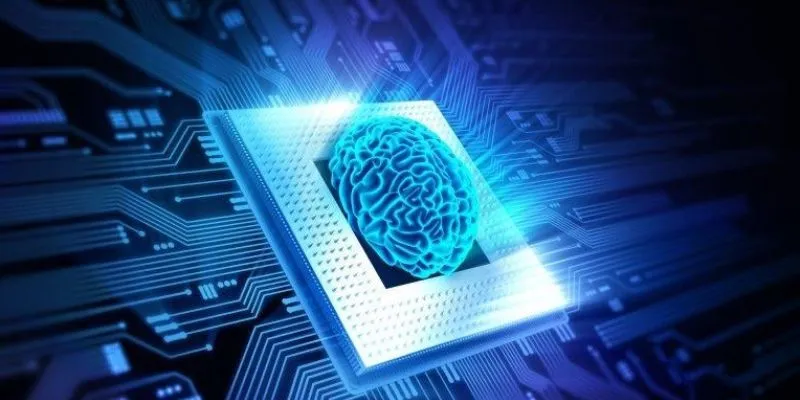
Machine learning is all about teaching computers to learn and make decisions by using data. But not all data is clean or ready to use. Data preprocessing plays a key role in preparing raw data so that machine learning models can understand and learn from it effectively. Whether you’re a student curious about machine learning or a professional exploring the field, understanding data preprocessing is a must.
Data Preprocessing: The Foundation of Machine Learning
Imagine trying to bake a cake without proper ingredients—some are rotten, some are missing, and some need to be measured. The result won’t be good, right? Machine learning faces a similar challenge when dealing with raw data. Data preprocessing is like cleaning, organizing, and preparing the ingredients to ensure the “cake” (machine learning model) turns out great.
In simple terms, data preprocessing involves cleaning, transforming, and organizing raw data to make it suitable for training machine learning models. Without preprocessing, even the most advanced machine learning algorithms can struggle to produce accurate results. If you’re interested in diving deeper into machine learning, enrolling in a Machine Learning Course in Chennai can provide you with the essential skills to handle data preprocessing effectively, ensuring your models perform well.
Why Is Data Preprocessing Important?
- Improves Data Quality: Raw data is often messy—it might contain errors, missing values, or duplicates. Preprocessing helps clean up this mess, ensuring that the data used for training models is accurate and consistent. Clean data leads to better predictions.
- Handles Missing Data: Sometimes, datasets have missing values, like blank spaces or incomplete information. For example, if you’re building a weather prediction model and some days’ temperatures are missing, the model can’t learn properly. Data preprocessing fixes this by either filling in missing values or removing incomplete rows.
- Removes Noise: Noise in data refers to irrelevant or random information that can confuse machine learning models. Preprocessing filters out this noise, helping the model focus on useful information.
- Makes Data Consistent: Imagine having a dataset where some people wrote “USA” and others wrote “United States” for the same country. Preprocessing standardizes this kind of information to ensure uniformity, which makes data analysis easier. When you’re learning machine learning, consistency in data is crucial for building reliable models. A Machine Learning Online Course can teach you techniques to standardize and clean your data, making it easier to build robust machine learning models that perform accurately.
Read more: Selenium vs. Cypress: Which is the Better Test Automation Tool?
Steps in Data Preprocessing
1. Data Cleaning: Cleaning removes errors, duplicates, and missing values from the data.
For example:
- Fill missing values with averages or similar data.
- Remove duplicates to avoid misleading results.
2. Data Transformation: This step converts raw data into a format that the machine learning model can understand. It includes:
3. Scaling and Normalization: Adjusting data values to fit a specific range (e.g., 0 to 1).
4. Encoding: Converting text data into numbers, like turning “Male” and “Female” into 0 and 1.
5. Data Integration: Sometimes, data comes from different sources. Data integration combines this information into one dataset for easy analysis.
6. Data Reduction: Large datasets can slow down processing. Data reduction simplifies the dataset by removing unnecessary features or combining similar data, speeding up the training process without losing important information. Learning how to handle large datasets effectively is a crucial skill in both machine learning and cloud computing. By enrolling in a Cloud Computing Course in Chennai, you can gain insights into optimizing data storage and processing, further enhancing your ability to work with large datasets in cloud environments.
Real-Life Examples of Data Preprocessing
1. Predicting House Prices
When predicting house prices, raw data might have missing details, like the number of bedrooms. Preprocessing fills in these blanks and standardizes information, ensuring accurate predictions.
2. Detecting Spam Emails
Spam email detection uses preprocessing to remove irrelevant data (like email headers) and convert words into numbers for machine learning models to analyze.
3. Recommending Movies
Platforms like Netflix preprocess user data, such as watch history and ratings, to suggest movies users might enjoy. This data preprocessing ensures that the recommendation algorithms can make personalized suggestions based on clean and well-processed data. A Cloud Computing Online Course can teach you how to leverage cloud resources for efficient data storage, processing, and retrieval, enabling scalable systems for personalized recommendations like those used in movie streaming platforms.
Read more: Why is Mobile Marketing Crucial for Today’s Businesses?
Benefits of Data Preprocessing
- Improves Model Accuracy: Clean, well-processed data helps the model make better predictions.
- Speeds Up Training: Preprocessed data reduces the time it takes for the model to learn.
- Handles Real-World Data Issues: Preprocessing ensures that models can work with the messy data found in real-world applications.
Data preprocessing is like preparing ingredients for a recipe—it’s an essential step that determines the success of a machine learning model. By cleaning, organizing, and transforming raw data, preprocessing ensures that models learn effectively and make accurate predictions. Whether you’re a teenager diving into machine learning or a professional aiming to sharpen your skills, mastering data preprocessing is the first step toward success in this field.
With well-prepared data, machine learning becomes not just powerful but also reliable, enabling breakthroughs in industries like healthcare, entertainment, and finance. So, before jumping into building models, remember: good data leads to great results! To further your learning journey, consider enrolling in a Training Institute in Chennai. These institutes provide structured, hands-on courses that will help you master data preprocessing techniques, along with other essential machine learning and cloud computing skills, setting you up for a successful career.
Read more: How Blockchain is Reducing Government Corruption?
